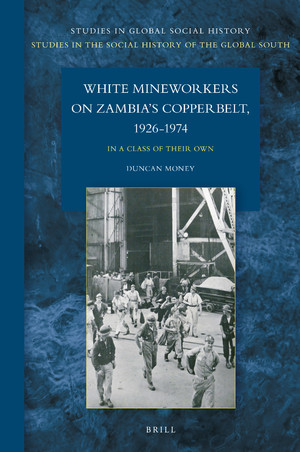White Mineworkers on Zambia's Copperbelt, 1926-1974: In a Class of Their Own
 Life and work on the Zambian Copperbelt - a concentrated industrialised mining region along the border with DR Congo - has been a perennial subject for Africanist historians. In this book, Duncan Money for the first time focusses on the white mineworkers who monopolised skilled jobs on the mines from the 1920s to the 1960s and became one of the most affluent groups of workers on the planet. Money argues that this group was a highly mobile global workforce which constituted, and saw itself as, a racialised working class. For much of the twentieth century, this white working class moved between mining and industrial centres across and beyond the British Empire and their actions and forms of organisation were strongly influenced by their international connections and by their mobility. These transnational connections, and the white working-class militancy they produced, played a crucial role in shaping social categories of race and class on the Copperbelt and determining the evolution of a region which quickly became one of the world’s largest sources of copper.
Life and work on the Zambian Copperbelt - a concentrated industrialised mining region along the border with DR Congo - has been a perennial subject for Africanist historians. In this book, Duncan Money for the first time focusses on the white mineworkers who monopolised skilled jobs on the mines from the 1920s to the 1960s and became one of the most affluent groups of workers on the planet. Money argues that this group was a highly mobile global workforce which constituted, and saw itself as, a racialised working class. For much of the twentieth century, this white working class moved between mining and industrial centres across and beyond the British Empire and their actions and forms of organisation were strongly influenced by their international connections and by their mobility. These transnational connections, and the white working-class militancy they produced, played a crucial role in shaping social categories of race and class on the Copperbelt and determining the evolution of a region which quickly became one of the world’s largest sources of copper.
Buy the book or read an open access version.
Register for the book launch on 24 March 2022!
Read a review of the book by Jabulani Shaba in South African Historical Journal.
Author(s) / editor(s)
About the author(s) / editor(s)

Duncan Money is a historian of Central and Southern Africa during the 19th and 20th century. His research focuses primarily on the mining industry and, in particular, the Zambian Copperbelt.

